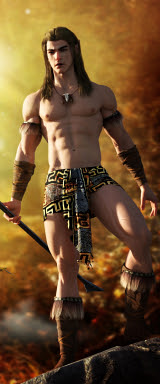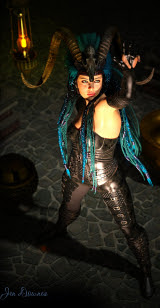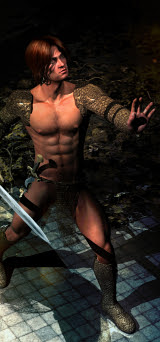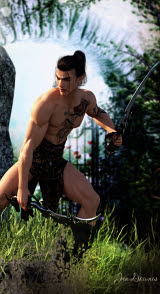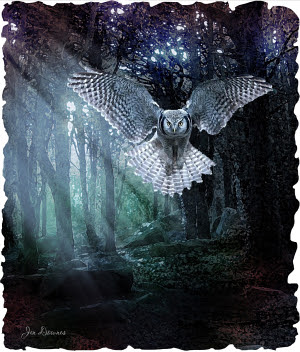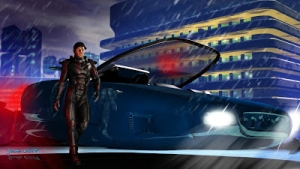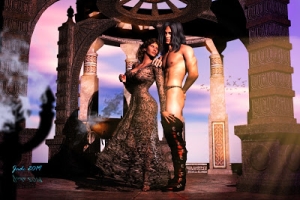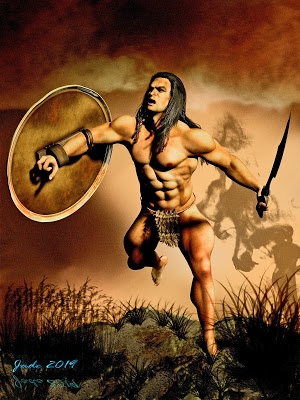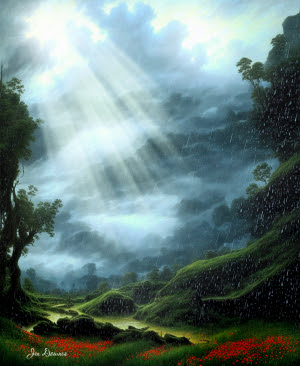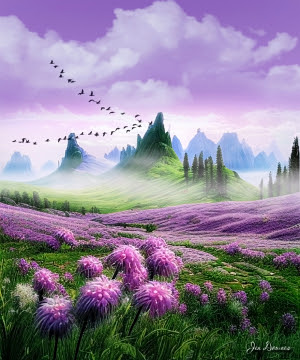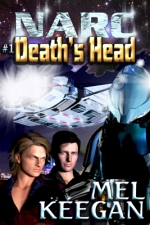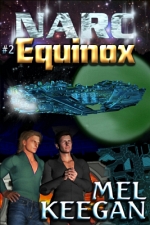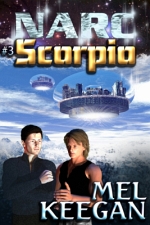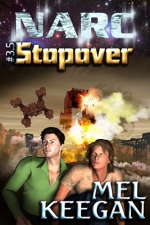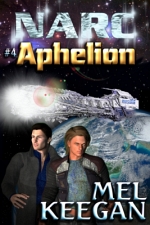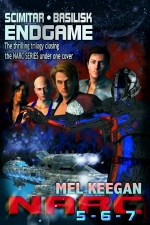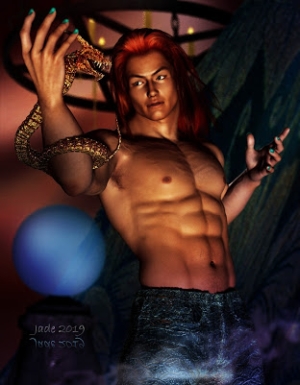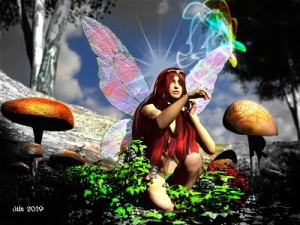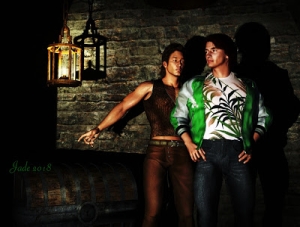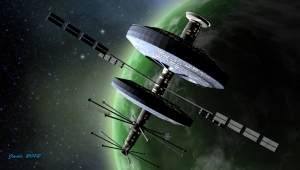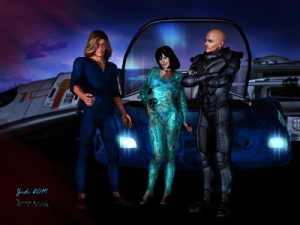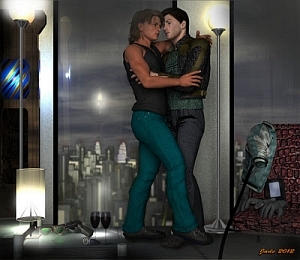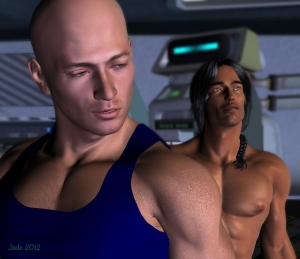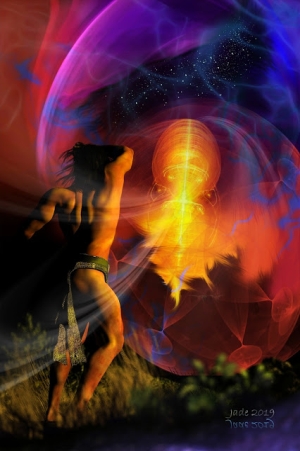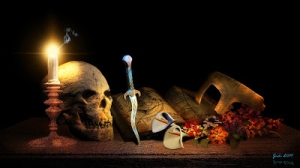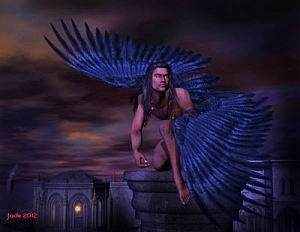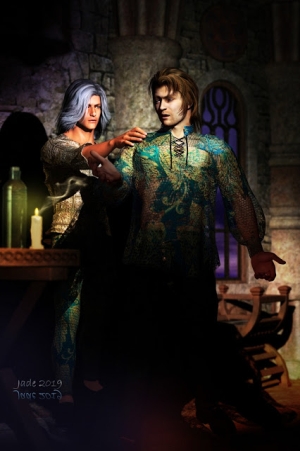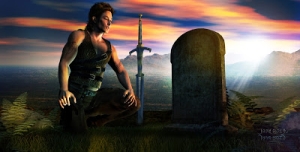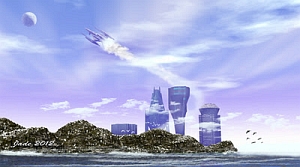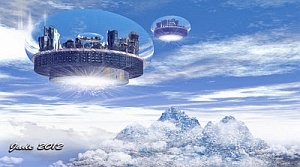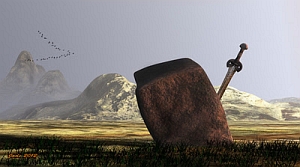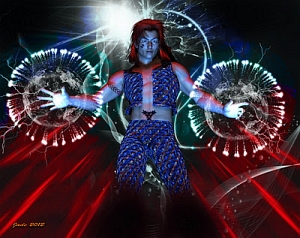Loads of experiments going on today. Above: our Sci-Fi hero ... looks like a detective to me, on the streets of a futuristic city, on the job, investigating -- well, fill in the blank and you have the story! Same character you saw last time, but in this one I've turned a swatch of the cityscape into night, added the car and reset the lights. Am rather pleased with that hair, too: hand painted. After a long, long time, am just starting to get halfway good at painting hair! Got a long way to go, still, but am starting to show progress.
Now ... these, below, were reasonably quick experiments, to see what could be (gasp!) rendered in Bryce 7 Pro. Yes, you read that correctly. But don't get your hopes up ... nope, I didn't have a revelation and suddenly figure out how to make Bryce behave like a cross between Terragen and Vue! I cheated. Totally. These backdrops you see here are photos --
-- and I hear at least some of you saying, "Hang on a minute, you can't set a backdrop in Bryce!" Well, actually, you can't but ... you can. It doesn't work every time, and you have to be phenomenally careful with it, but the trick is this: create a 2D vertical plane; slap a photo on it as the material (!); set the Z coordinate to send it waaay into the distant background; resize it BIG; set the light (sun) shining right on it to make it nice and bright. Adjust the specularity if you need to. Now you can stand anything you want in front of it, and shazam! That's a backdrop in Bryce. Yep, it's a cheat -- 😜-- but it works. (Those are photos from our recent Grampians trip. They were handy, so I grabbed them to use for these tests.) However...
I was thinking to myself, "I'm doing this bass-ackwards. There has to be an easier way." And there actually is. Digital matte compositing. Hunh. You know, green screen stuff. Like this:
Okay, now that shot is getting good, by anyone's standards, and it was done in about twenty minutes flat, using Bryce 7 Pro (the spacecraft), and Terragen (the gas giant) and Photoshop (for the compositing work. Here's the basic images:
That's a Bryce render, took four or five minutes ... with the "sky" set to green so that the color picker in Photoshop would see the makeshift alpha channel. No problem so far. I rendered it at 2:1 size, about 3600 pixels wide, to get an image that was fine enough to achieve a cutout, after the green had been made to vanish, that didn't suffer from "the jaggies." Easy. Plus...
Okay, my computer rendered this, but no way can I sign off on it and tell you it's my work, because in fact it's one of the pre-set files in a pack of Terragen "examples" you can download from the company (Planetside Software, in the UK), ostensibly to get you started. You're supposed to reverse-engineer the project file, take it to pieces, and suddenly you know how it was done. Right? Hahahahaha! 😵 Well, good luck with that! I've had a go, and ... buggered if I can see how it was done, LOL. Never mind, I'll have another look later, maybe the penny will drop.
In the meantime, putting the two images together in Photoshop was just too easy, and the result ... please to have a squiz at that one, at large size. It's pretty darned good, and it's the first time I ever did the green screen trick! Ooooh, this opens up vistas of possibility!
Back soon. Soooo many ideas buzzing around in my head!


















